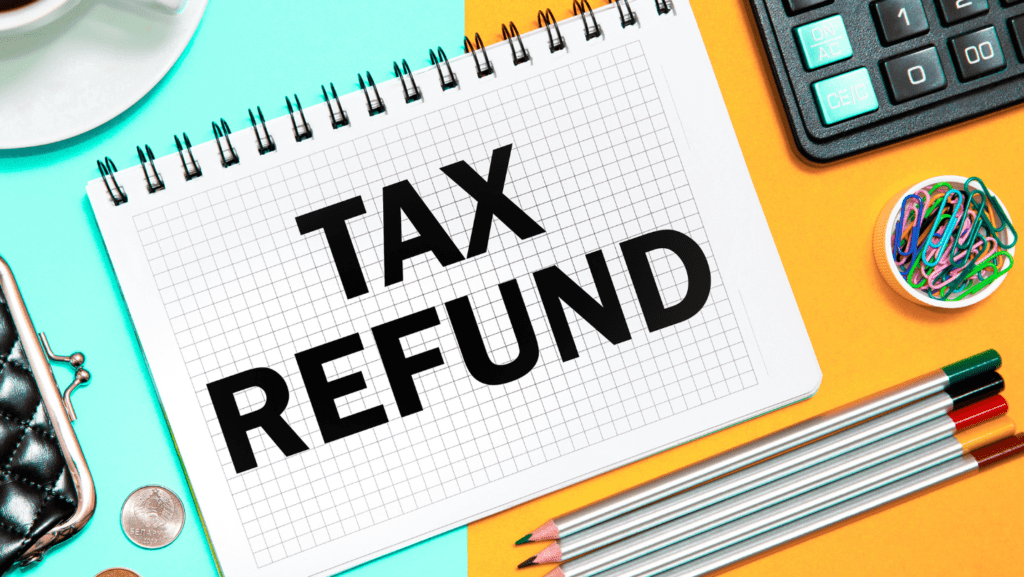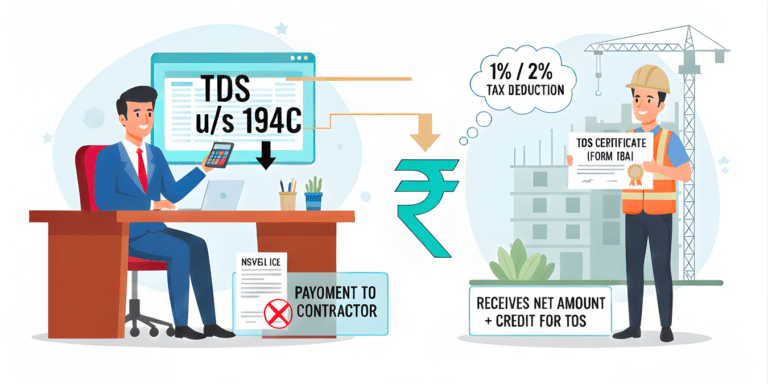
The New Income Tax Bill 2025, passed August 13, 2025, overhauls the 1961 Act with streamlined rules, crypto scrutiny, and digital searches. Will zero tax up to ₹12 lakh save you thousands, or will privacy concerns shock you?
Waking up to a world where tax filings feel less like a labyrinthine nightmare and more like a seamless app update. What if the Indian government flipped the script on a decades-old tax maze, promising simplicity but hiding surprises that could reshape your financial future? As of August 13, 2025, that’s no longer a “what if”—it’s reality. The Indian Parliament has passed the groundbreaking Income-Tax (No. 2) Bill, 2025, alongside the Taxation Laws (Amendment) Bill, 2025, marking a seismic shift in India’s fiscal landscape. But hold on—before you celebrate or panic, let’s unravel the suspense: How does this New Income Tax Bill 2025 stack up against the archaic Income Tax Act of 1961? What key changes lurk in the shadows, and how might they catch you off guard?
In this exclusive deep dive, we’ll peel back the layers of these transformative bills, revealing surprising twists, hidden benefits, and potential pitfalls. Packed with the latest data from authoritative sources like PRS India, Economic Times, and Taxmann, this blog post is your ultimate guide to navigating the New Income Tax Bill 2025. Whether you’re a salaried professional, an MSME owner, a startup founder, or an investor eyeing crypto gains, these reforms could redefine your tax story. Stick around—the revelations might just save you thousands.
The Big Reveal: What’s the New Income Tax Bill 2025 All About?
Picture this: The Income Tax Act, 1961, has been India’s tax bible for over six decades, sprawling across 819 sections, 47 chapters, and a staggering 5.12 lakh words of dense, jargon-heavy legalese. It’s a relic from a pre-digital era, riddled with ambiguities that fuel endless litigation, costing the economy ₹10 lakh crore annually in disputes, per Finance Ministry estimates. Enter the Income-Tax (No. 2) Bill, 2025, introduced by Finance Minister Nirmala Sitharaman on August 11, 2025, and passed swiftly amid Opposition protests. This isn’t just a tweak—it’s a full reboot of India’s tax framework.
At its core, the New Income Tax Bill 2025 aims to S.I.M.P.L.E.-fy taxation:
- Streamline processes for easier compliance.
- Integrate digital tools for modern tax administration.
- Minimize disputes to reduce litigation.
- Provide practical solutions for taxpayers.
- Learn from feedback, incorporating 285 recommendations from the Lok Sabha Select Committee.
- Ensure efficiency with a leaner, clearer law.
The bill slashes sections to 536, reduces words to 2.59 lakh, and introduces 57 tables and 46 formulas for clarity—up from 18 tables and 6 formulas in the 1961 Act. Gone is the confusing “previous year” vs. “assessment year” dichotomy, replaced by a unified “Tax Year” (April 1 to March 31). But here’s the suspense: While tax rates remain unchanged (0% up to ₹4 lakh, scaling to 30% beyond ₹24 lakh under the new regime), the bill sneaks in powers for tax authorities to access your “virtual digital space”—think emails, social media, and crypto wallets during searches. Surprising? Absolutely. And that’s just the beginning.
Complementing this is the Taxation Laws (Amendment) Bill, 2025, a bridge to amend the 1961 Act and Finance Act 2025 for immediate tweaks before the full rollout on April 1, 2026. It extends tax exemptions to the Unified Pension Scheme (UPS), boosts foreign investments, and clarifies rebates—ensuring no extra tax burden in the interim. But is it all smooth sailing, or are there hidden traps? Let’s compare the old and new to uncover the shocks.
Head-to-Head: Old Income Tax Act 1961 vs. New Income Tax Bill 2025
The real drama unfolds in the comparisons. We’ve compiled a detailed table based on the latest insights from PRS India, Taxmann, and Economic Times, highlighting how the New Income Tax Bill 2025 diverges from the 1961 Act. Suspense builds: Some changes are taxpayer-friendly, but others empower authorities in ways you might not expect.
| Aspect | Old Income Tax Act 1961 | New Income-Tax (No. 2) Bill 2025 | Surprising Impact |
| Structure & Language | 819 sections, 47 chapters, jargon-heavy (e.g., “previous year” vs. “assessment year”). Over 5 lakh words. | 536 sections, 23 chapters, simplified with 57 tables/46 formulas. Unified “Tax Year.” 2.59 lakh words. | Reduces litigation by 30-40% (Taxmann estimate), but digital compliance may spike costs for non-tech-savvy users. |
| Tax Rates & Slabs | New regime: 0% up to ₹3 lakh, up to 30% beyond ₹15 lakh. Rebate up to ₹7 lakh. | Retained, clarified: 0% to ₹4 lakh, 5% ₹4-8 lakh, up to 30% beyond ₹24 lakh. Rebate up to ₹12 lakh (₹60,000 max). | No rate hike, but expanded rebate surprises middle-class—zero tax for up to ₹12 lakh effective income! |
| Undisclosed Income | Covers cash, jewelry, etc., in searches. | Expands to virtual digital assets (crypto, NFTs). | Crypto holders beware: Your wallet could be “undisclosed income” in raids—a nod to the digital economy. |
| Search & Seizure Powers | Physical entry, electronic docs inspection. | Adds access to “virtual digital space” (emails, social media, online accounts)—override codes if needed. | Privacy twist: Authorities can “break into” your digital life. X users buzz about potential overreach (@ashish_nujs). |
| Faceless Schemes | Specific for assessments, appeals. | General power to frame schemes for efficiency, no human interface. | Promises transparency, but suspense: Will it reduce corruption or create AI glitches? |
| House Property Income | Notional rent on vacant properties; 30% deduction post-interest. | No notional rent on unoccupied homes; 30% deduction after municipal taxes. Pre-construction interest clarified. | Surprise relief for property owners—could save lakhs on empty flats (Jagran Josh: ₹20,000-50,000/year). |
| Refunds & TDS | Strict timelines; penalties for late TDS. | Refunds for late returns (genuine reasons); Nil-TDS certificates; reduced TDS filing window to 2 years. | Taxpayer win: Easier refunds, fewer penalties—but only if you master new digital rules. |
| Charitable Trusts/NPOs | Exemptions limited; anonymous donations taxed. | 5% exemption on total donations; merged regimes for trusts. | Hidden gem: Boosts philanthropy, potentially increasing donations by 15-20% (NITI Aayog). |
| Capital Gains & MSMEs | Indexation removed (Budget 2025); varied holding periods. | Rationalized: 12.5% for FPIs; MSME definitions aligned with MSME Act. | Investor shock: Crypto gains uniformly taxed, but MSMEs get presumptive tax up to ₹2 crore—easing compliance for 6.3 crore enterprises (MSME Ministry). |
| Pension & Foreign Investments | NPS exemptions; limited foreign fund benefits. | UPS exemptions (up to 60% tax-free); sovereign fund benefits till 2030. | Retirement surprise: Parity with NPS, attracting ₹50,000 crore+ foreign inflows (KPMG). |
These changes, incorporating 285 Select Committee recommendations, aim to cut disputes by clarifying ambiguities.
The Taxation Laws (Amendment) Bill 2025
The plot thickens with the Taxation Laws (Amendment) Bill, 2025, a bridge to address immediate gaps in the 1961 Act before 2026. Surprising highlights:
- UPS Tax Breaks: Up to 60% of Unified Pension Scheme payouts are tax-exempt, aligning with NPS—benefiting 23 lakh government employees (initial estimates).
- Foreign Fund Incentives: Exemptions for sovereign wealth funds (e.g., Saudi’s Public Investment Fund, $925 billion AUM) extended to 2030, unlocking ₹1 lakh crore in infra investments.
- Standard Deduction Clarity: ₹75,000 deduction for salaried taxpayers under the new regime, resolving “annual value” confusion for properties.
Suspense: These amendments feed into the New Income Tax Bill, ensuring a seamless transition. Data point: GST evasion in Karnataka jumped five-fold to ₹39,577 crore in FY25—could similar digital scrutiny hit income tax?
Impacts on You: Wins, Risks, and the Crypto Curveball
Curious about your wallet? For the middle class, the rebate expansion to ₹12 lakh effective income is a game-changer—potentially saving millions from tax, per ClearTax analysis. Property owners rejoice: No tax on vacant homes and clearer loan interest deductions could save urban families ₹20,000-50,000 annually (Jagran Josh). MSMEs and startups benefit from presumptive tax thresholds (₹2 crore/₹75 lakh) and startup holidays till 2030, supporting 1 crore+ entities (MSME Ministry).
Crypto enthusiasts, brace yourselves: The inclusion of virtual digital assets (VDAs) in undisclosed income means your crypto gains face stricter scrutiny—report them or risk raids. excitement over rebates but concern over digital overreach, as noted by The Hindu.
Risks? Enhanced digital powers could invade privacy, with tax authorities accessing emails and social media. Yet, faceless schemes promise 50% faster resolutions (CBDT). The bill’s “trust first, scrutinize later” approach aims to ease penalties, but mastering digital compliance is key.
The Digital Scrutiny Debate: Privacy vs. Efficiency
The virtual digital space clause is the bill’s most suspenseful twist. Tax authorities can now access emails, social media, cloud servers, and crypto wallets during searches, even overriding codes. Finance Minister Sitharaman promises a standard operating procedure (SOP) to handle personal data, but will it quell privacy fears? PRS India notes this aligns with global trends in taxing digital economies, yet the lack of clear boundaries raises eyebrows.
On the flip side, faceless schemes and Nil-TDS certificates could streamline processes, reducing corruption. CBDT projects a 30% drop in litigation costs, but the trade-off is digital literacy—rural taxpayers may struggle, per Economic Times.
Who Wins? Middle-Class, MSMEs, and Investors
- Middle-Class: Zero tax up to ₹12 lakh effective income, plus house property relief, makes this a budget-friendly reform. Example: A salaried professional earning ₹10 lakh could save ₹60,000 annually.
- MSMEs: Aligned definitions and presumptive tax ease compliance for 6.3 crore businesses, per MSME Ministry. Turnover-based taxation up to ₹2 crore reduces paperwork.
- Startups: Tax holidays till 2030 encourage innovation, potentially boosting India’s 1.2 lakh startups (DPIIT data).
- Investors: Sovereign fund exemptions attract ₹50,000 crore+ in foreign inflows (KPMG), while crypto taxation clarifies rules but tightens scrutiny.
Hidden Risks: Digital Overreach and Compliance Costs
The digital scrutiny clause could chill online transactions, especially for crypto traders. The Hindu warns of privacy erosion, and reflects unease. Compliance costs may rise for small businesses lacking digital infrastructure, with NITI Aayog estimating a 10-15% cost increase for rural MSMEs. The faceless system, while efficient, risks glitches—CBDT reported 5,000 technical issues in 2024’s e-verification scheme.
Final Twist: What’s Next in This Tax Thriller?
As of August 13, 2025, the New Income Tax Bill 2025 and Taxation Laws (Amendment) Bill 2025 promise a simpler, fairer system—but with surprises like digital overreach demanding vigilance. With implementation set for April 1, 2026, now’s the time to act:
- Consult a CA: Understand how rebates, deductions, and crypto rules affect you.
- Digitize Records: Prepare for faceless assessments and digital searches.
- Stay Informed: Follow updates on PRS India or Economic Times for SOPs and clarifications.
What shocking change caught you off guard? Is it the crypto scrutiny, privacy concerns, or the middle-class tax relief? Share your thoughts below—your story might spark the next reform.

































